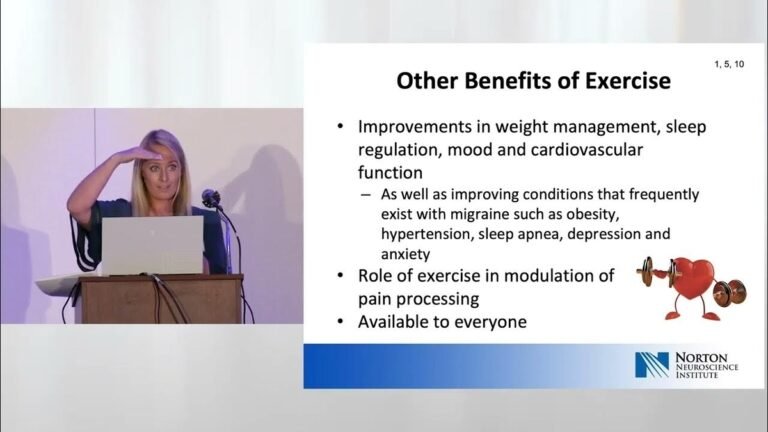Migraines can be debilitating, with symptoms ranging from severe headaches to nausea, dizziness, and sensitivity to light and sound. New research suggests that physical activity, such as hiking, can help reduce these symptoms and provide a non-pharmacological treatment approach. This is a ray of hope for those looking for another way to alleviate migraine symptoms.
The role of exercise in migraine symptom relief
Scientific evidence supports the benefits of exercise in relieving headache and migraine symptoms. Physical activity contributes to both our physical and mental health. Regular exercise can help relieve tension and stress, which often trigger migraines. It also stimulates the release of endorphins, the body’s natural painkillers, which can help reduce the severity and frequency of headaches.
Physical therapy and migraine management
Physical therapy provides a comprehensive, patient-centered approach to managing migraines. This includes addressing musculoskeletal issues, improving posture, and incorporating stress management techniques. By focusing on identifying and addressing musculoskeletal problems that can cause migraine episodes, physical therapy can alleviate symptoms and improve overall health. . Physical therapists use manual therapy techniques, postural correction, ergonomic adjustments, relaxation and stress management techniques to help individuals effectively manage their stress levels.
Practical advice for dealing with frequent migraines
Understanding frequent migraines, medication and treatment options, self-care techniques, lifestyle modifications, and stress management are important to managing frequent migraines. Adjusting your diet and understanding the emotional impact of migraines also play an important role in managing this condition. It is important to consult with your health care professional to develop a personalized treatment plan that best fits your needs and lifestyle.
Migraine, menopause, cardiovascular risk
New research suggests that most middle-aged women don’t need to worry about the cardiovascular risks associated with menopausal symptoms, migraines, and hot flashes. But women who have experienced both migraines and hot flashes or night sweats for years are at even higher risk for cardiovascular disease. This highlights the importance of understanding and controlling risk factors that can increase the likelihood of future heart disease and stroke.
Relationship between posture and migraine
Tracking changes in posture during a migraine attack can provide valuable insight into the relationship between posture and migraine. Tracking changes in posture can help you identify migraine triggers and develop strategies to manage your migraines more effectively. However, posture tracking can be difficult, and it is essential to develop strategies for effective posture tracking.
In conclusion, physical activity and other non-pharmacological approaches such as physical therapy and postural tracking may play an important role in migraine management. Everyone experiences migraines differently, but understanding your triggers and developing a personalized treatment plan with the help of a medical professional can go a long way in managing this condition.


